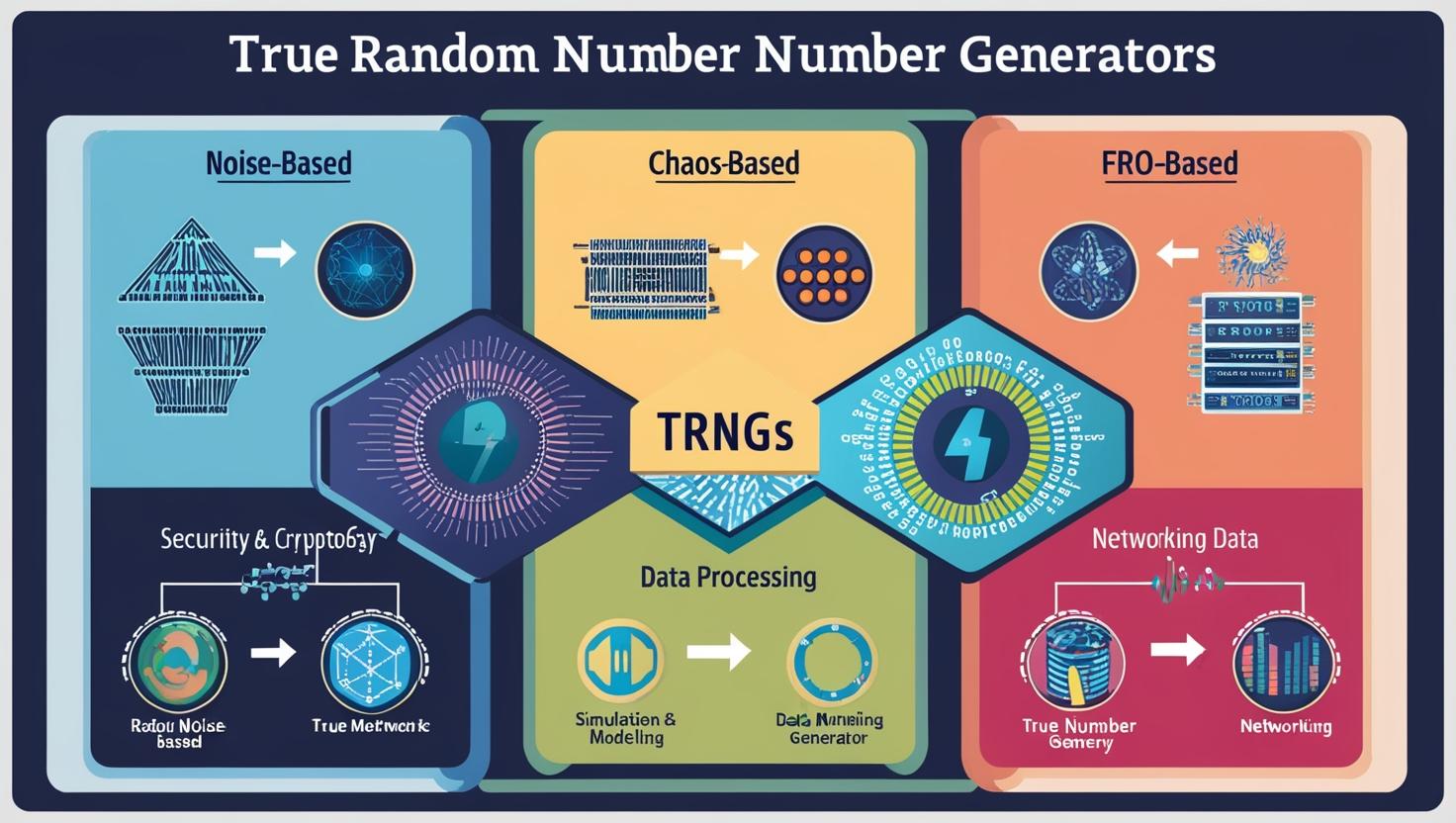In the digital age, the backbone of cybersecurity lies in randomness. Whether it’s encrypting communication, securing blockchain networks, or authenticating devices, cryptography depends on unpredictable, non-repeating numbers. This is where True Random Number Generators (TRNGs) come into play—delivering the entropy needed to secure digital systems against increasingly sophisticated threats.
As data breaches, quantum computing, and edge devices reshape the security landscape, TRNGs are emerging as a critical component in the future of cryptographic defense.
The Problem with Pseudorandomness
Most software-based security systems still rely on Pseudorandom Number Generators (PRNGs)—algorithms that simulate randomness using deterministic processes. While PRNGs are sufficient for general use, they are fundamentally predictable if the seed or algorithm is known. This predictability creates vulnerabilities in cryptographic systems, particularly in environments where high entropy and non-reproducibility are critical.
Cyber attackers can exploit weak entropy sources to predict encryption keys, forge authentication codes, or even compromise secure communication channels. This has led industries and governments to explore more secure, hardware-based alternatives—TRNGs.
What Makes TRNGs Different
True Random Number Generators derive randomness from physical, inherently unpredictable phenomena such as electrical noise, thermal fluctuations, or quantum effects. Unlike PRNGs, TRNGs do not rely on mathematical formulas; instead, they extract entropy from nature itself—making them far more resistant to prediction and reverse engineering.
TRNGs are typically embedded in hardware components and are now being integrated into microcontrollers, security chips, and even IoT edge devices. Their ability to produce non-deterministic outputs in real time is precisely what modern cryptography demands.
Download PDF Brochure @ https://www.marketsandmarkets.com/pdfdownloadNew.asp?id=224265452

Applications Across a Growing Threat Landscape
Cryptographic Key Generation
TRNGs are vital in generating truly random keys for encryption protocols like RSA, AES, and ECC. These keys protect everything from government communications to cloud infrastructure.
Blockchain and Web3
In decentralized environments, such as blockchain and smart contracts, randomness is required for consensus algorithms, token generation, and game mechanics. TRNGs eliminate the bias and predictability issues associated with PRNG-based solutions.
IoT and Embedded Systems
TRNGs are becoming standard in securing low-power edge devices. As billions of IoT devices come online, many of which operate in vulnerable environments, TRNGs ensure secure boot, firmware updates, and device-to-cloud authentication.
Post-Quantum Cryptography
As quantum computing threatens current encryption standards, TRNGs will play a critical role in developing quantum-resistant algorithms. These future-proof cryptographic systems will rely on strong, physically unpredictable randomness to withstand quantum attacks.
Market Outlook and Innovation
The True Random Number Generator (TRNG) Industry worth $7.71 billion by 2030, fueled by increased regulatory pressure (e.g., GDPR, HIPAA, NIST standards), demand for hardware-level security, and exponential growth in connected devices.
Key players are now exploring quantum-based TRNGs, which use quantum fluctuations to generate entropy with unparalleled randomness and unpredictability. Companies like ID Quantique, Intel, and startups in the quantum computing space are at the forefront of this innovation.
The Future: Built on Entropy
As the world becomes more digitized—and as threats grow more advanced—the need for truly random, hardware-rooted security mechanisms is no longer optional. True Random Number Generators are not just a technical improvement; they are a foundational shift in how we think about digital trust, privacy, and resilience.
In the coming decade, TRNGs will be embedded everywhere—from cloud servers and mobile devices to autonomous vehicles and smart cities—quietly generating the entropy that keeps the digital world secure.
Conclusion:
In cryptography, randomness is power. And with TRNGs, that power is becoming real, physical, and virtually unbreakable. The future of secure communication, decentralized systems, and digital sovereignty may very well rest on how well we harness and protect the unpredictable.
